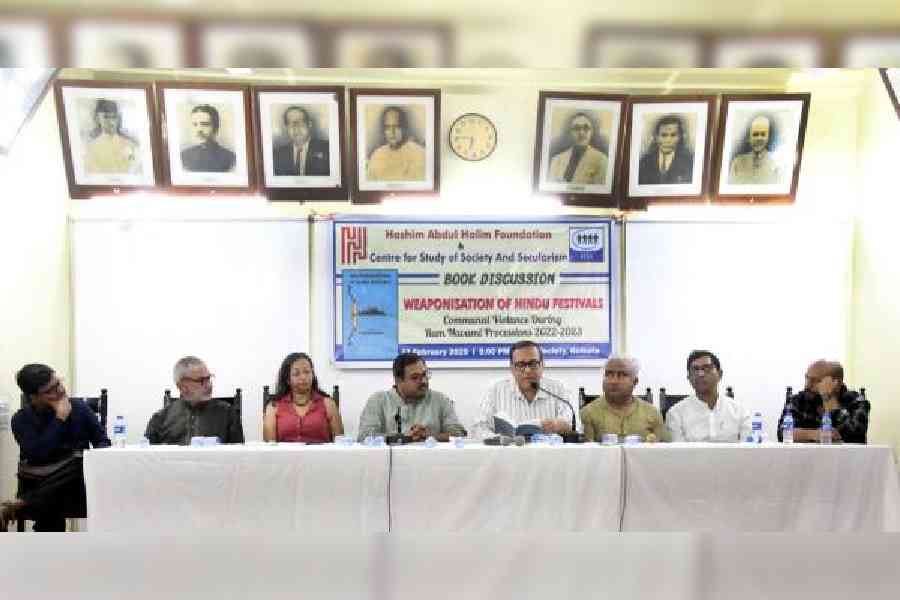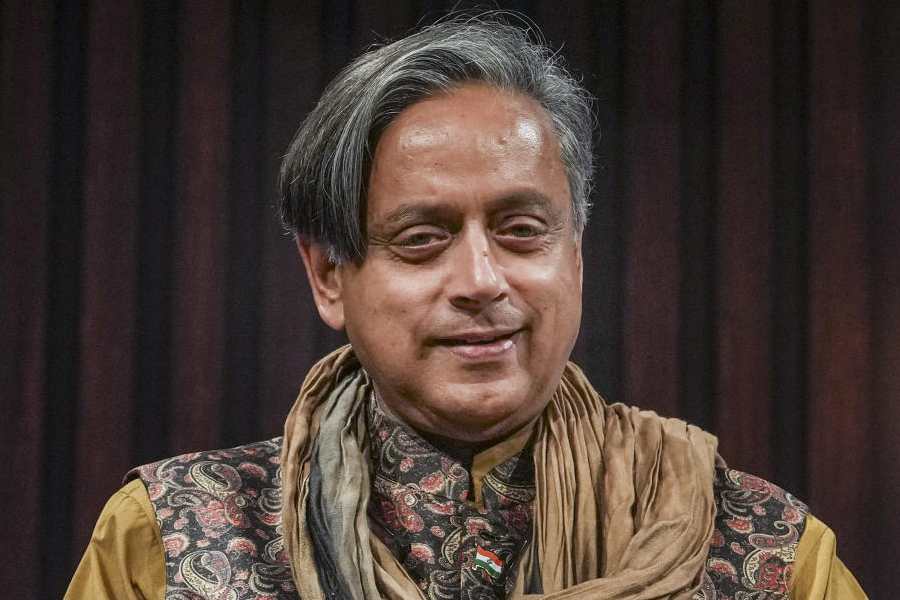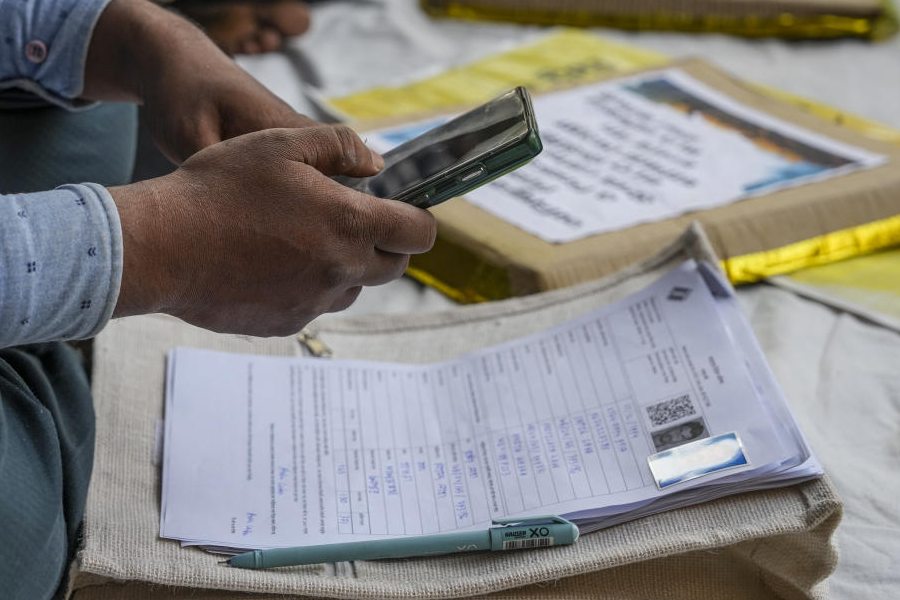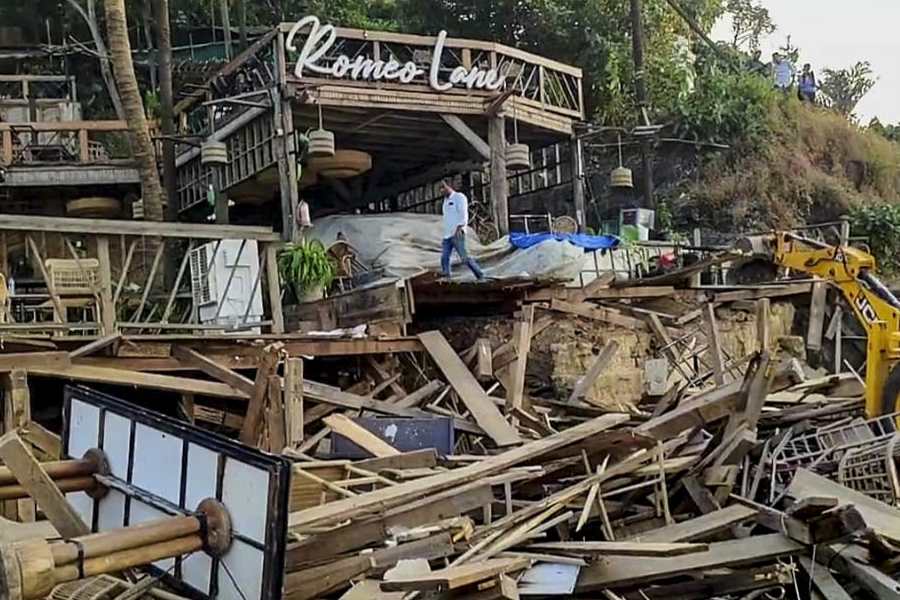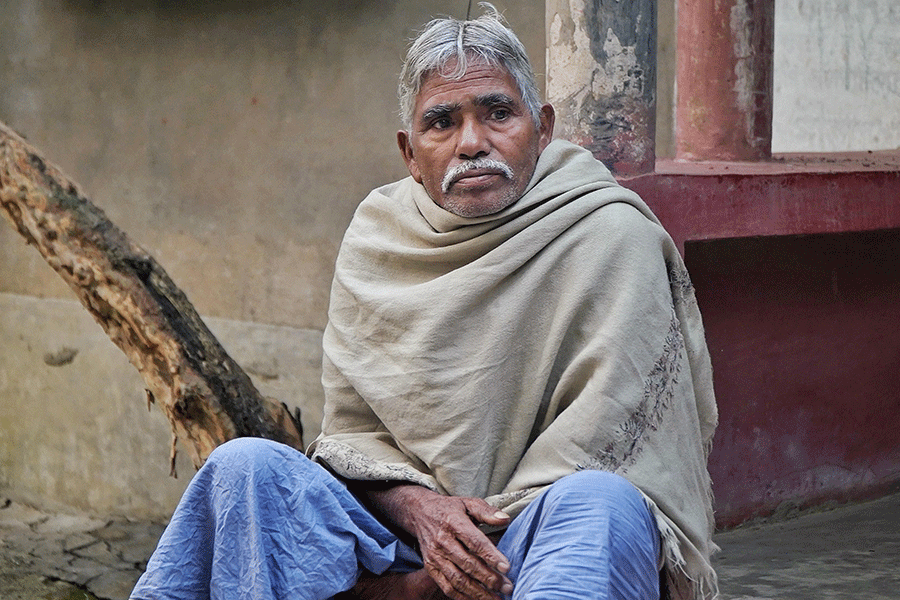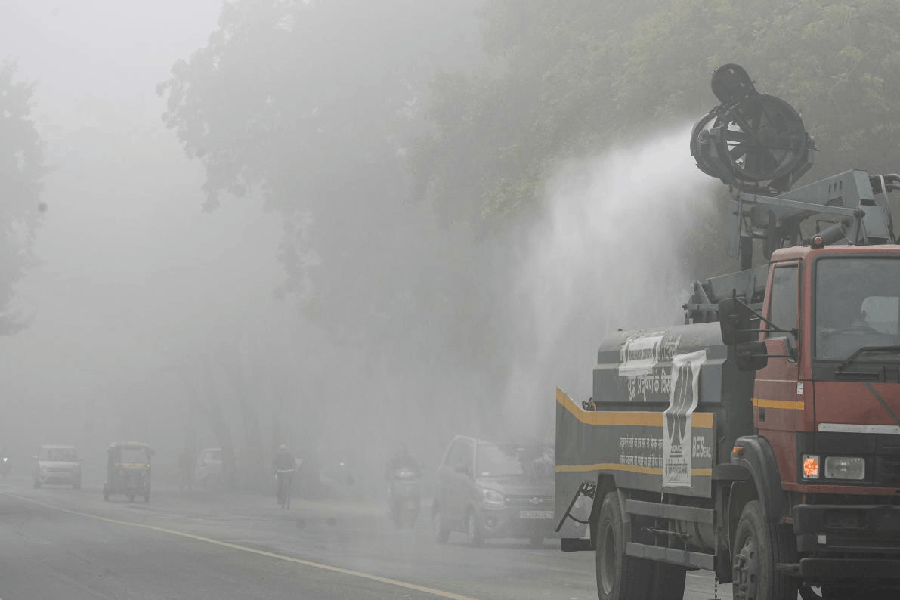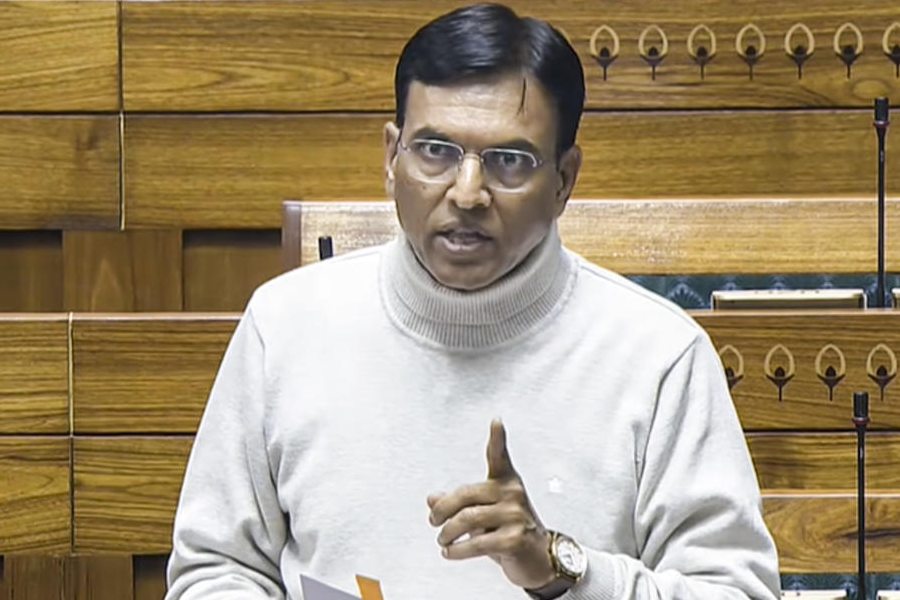The Bengal government’s role in dealing with the perpetrators of violence during Ram Navami processions in 2022 and 2023 was criticised during a discussion on the book — Weaponisation of Hindu Festivals— here on Wednesday.
The book — jointly authored by Irfan Engineer and Neha Dabhade — is a compilation of “fact-finding” reports of communal riots during the Ram Navami festivals in various states, including Bengal, Maharashtra, Gujarat, Madhya Pradesh, Bihar and Jharkhand, in 2022 and 2023.
Economist and political activist Prasenjit Bose was the moderator of the event, which was organised at the Iran Society by the Hashim Abdul Halim Foundation and the Centre for Study of Society and Secularism.
“In the discussion, it emerged that several saffron outfits took out processions during Ram Navami and those were motivated more to demonstrate their power than by religious reasons. The book is a compilation of reports on communal riots during the Ram Navami festivals in several states in 2022 and 2023,” said Bose.
Taking part in the discussion, Engineer said: “While this was a phenomenon across the country, it was disturbing for Bengal as such incidents had not occurred in the state even a few years ago.”
The panellists, who included the authors, politicians, academics and journalists, criticised the role of the Bengal government in the violence primarily for two reasons. First, the authorities did not play a proactive role in taking action against those who allegedly perpetrated violent incidents in places like Howrah, Calcutta and Asansol.
Second, the authors did not get the cooperation of government officials when they were approached to find the truth.
Social researcher Sabir Ahamed said lynchings had replaced riots as a form to create an environment of fear in states ruled by the BJP.
“There is no need for big communal riots now. The intensity of hatred and hate speeches has increased. Therefore, instead of big riots, lynching has become a tool to create an environment of fear that would force people not to speak up,” said Ahamed.
He also spoke about the trouble researchers faced as data were not readily available. “If the government was asked to provide data on the number of communal riots during a particular period, it would not be able to do so,” Ahamed said.
Engineer and Dabhade felt that the role of the Bengal government would be under the scanner when the festival would be held this year. They said the civil society had to be vigilant to avoid such incidents in future.

